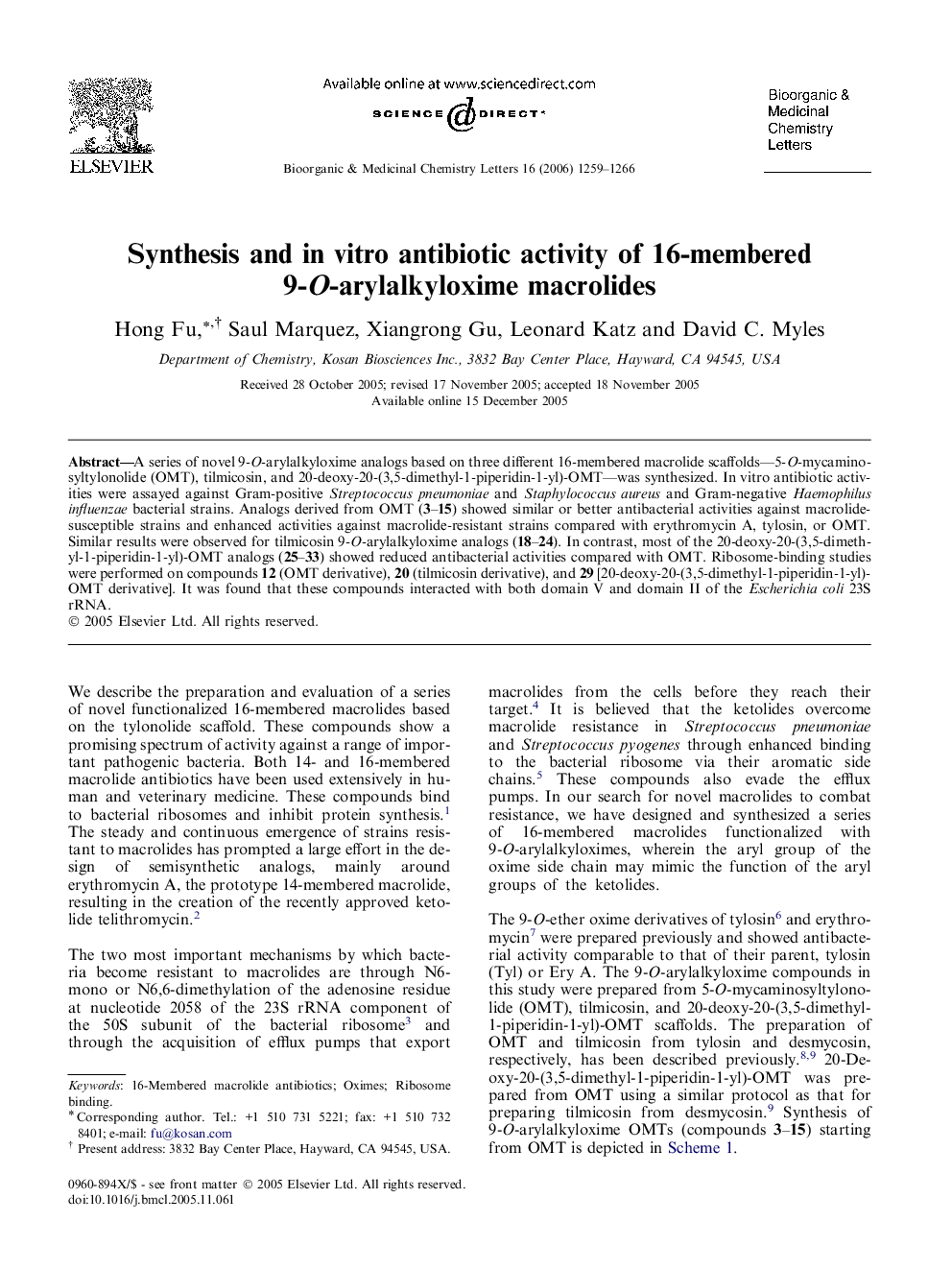| کد مقاله | کد نشریه | سال انتشار | مقاله انگلیسی | نسخه تمام متن |
|---|---|---|---|---|
| 1367489 | 981635 | 2006 | 8 صفحه PDF | دانلود رایگان |

A series of novel 9-O-arylalkyloxime analogs based on three different 16-membered macrolide scaffolds—5-O-mycaminosyltylonolide (OMT), tilmicosin, and 20-deoxy-20-(3,5-dimethyl-1-piperidin-1-yl)-OMT—was synthesized. In vitro antibiotic activities were assayed against Gram-positive Streptococcus pneumoniae and Staphylococcus aureus and Gram-negative Haemophilus influenzae bacterial strains. Analogs derived from OMT (3–15) showed similar or better antibacterial activities against macrolide-susceptible strains and enhanced activities against macrolide-resistant strains compared with erythromycin A, tylosin, or OMT. Similar results were observed for tilmicosin 9-O-arylalkyloxime analogs (18–24). In contrast, most of the 20-deoxy-20-(3,5-dimethyl-1-piperidin-1-yl)-OMT analogs (25–33) showed reduced antibacterial activities compared with OMT. Ribosome-binding studies were performed on compounds 12 (OMT derivative), 20 (tilmicosin derivative), and 29 [20-deoxy-20-(3,5-dimethyl-1-piperidin-1-yl)-OMT derivative]. It was found that these compounds interacted with both domain V and domain II of the Escherichia coli 23S rRNA.
Figure optionsDownload as PowerPoint slide
Journal: Bioorganic & Medicinal Chemistry Letters - Volume 16, Issue 5, 1 March 2006, Pages 1259–1266